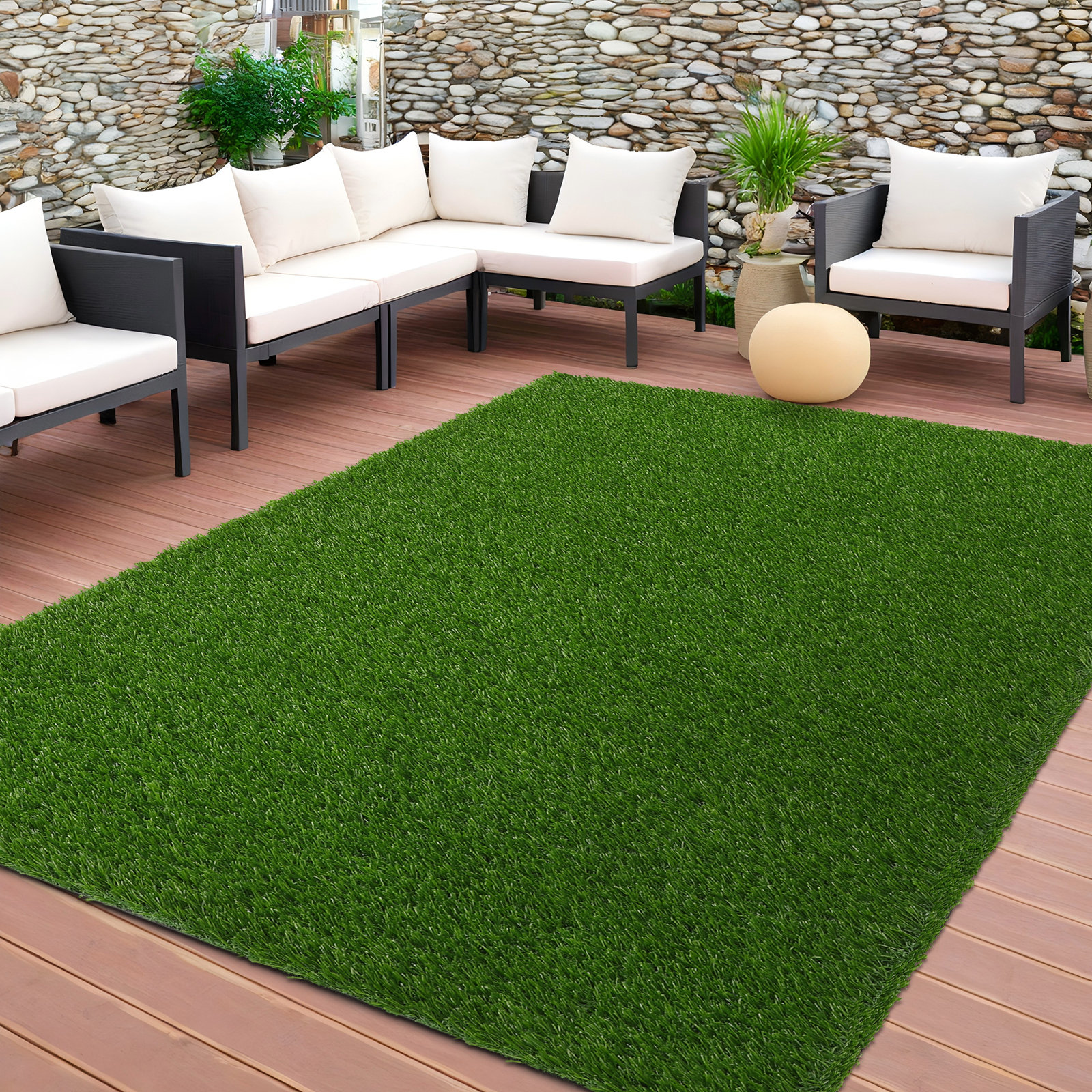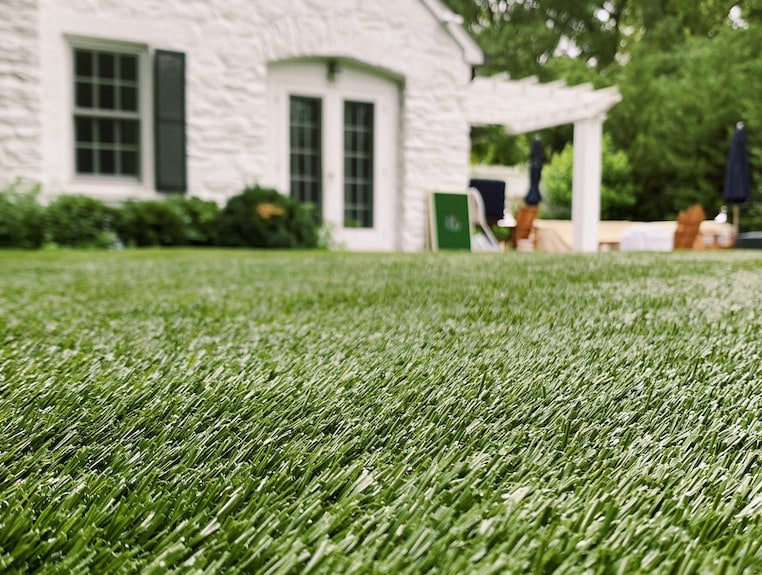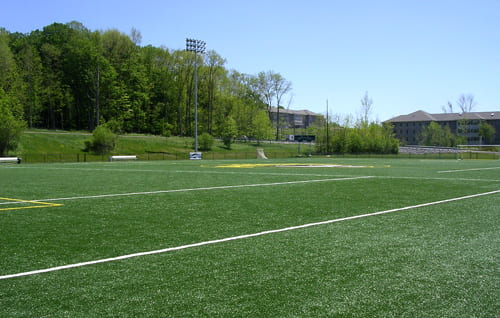See Why Homeowners Prefer Artificial Grass for Sustainable Landscape Design Practices
As house owners significantly focus on sustainability in landscaping, synthetic grass has emerged as a compelling choice to typical turf. Its ability to preserve water, decrease maintenance efforts, and reduce ecological influence settings it as a functional choice for those looking for eco-friendly solutions. The visual charm and versatility of artificial turf provide to varied layout choices. The effects of this change extend beyond mere convenience and appearances, motivating a more detailed evaluation of how these options affect more comprehensive environmental results. What remains to be explored is the full range of benefits that synthetic grass can supply to house owners and the environment alike.
Water Conservation Advantages
Among the most substantial advantages of synthetic grass is its duty in water conservation. Traditional lawn yards require considerable amounts of water to keep their rich look, usually leading to overuse of neighborhood water sources, specifically in deserts. On the other hand, synthetic grass eliminates this need completely, as it does not call for watering. This not just preserves water however likewise minimizes the pressure on metropolitan water systems, particularly throughout drought conditions.
Additionally, the installment of synthetic grass can add to a much more lasting landscape. Homeowners can considerably decrease their water expenses, permitting for reallocation of resources to various other ecological campaigns or household usages. Furthermore, synthetic grass is developed to endure numerous climatic problems without the requirement for supplemental watering, making it a suitable option for regions dealing with water shortage.
The environmental advantages prolong past prompt water financial savings. By minimizing water intake, artificial turf assists to minimize the impacts of climate modification, preserving crucial ecosystems that are threatened by too much water removal. As lasting landscaping practices get grip, man-made grass emerges as a responsible selection for home owners looking for to create eco-friendly exterior areas.
Reduced Maintenance Initiatives
Synthetic grass dramatically lowers upkeep efforts compared to standard grass lawns. With artificial grass, home owners can remove the lengthy jobs related to all-natural landscaping, such as mowing, feeding, and weeding. This not just saves beneficial time but also lowers physical labor, making grass care available for people of every ages.
Standard grass need constant trimming to keep a cosmetically pleasing elevation, whereas artificial grass continues to be regularly lush without the need for reducing. Additionally, home owners no longer require to apply pesticides or fertilizers, which are frequently needed to keep natural lawn healthy and balanced.
Furthermore, synthetic grass is resilient and durable, calling for marginal maintenance past occasional brushing and washing to eliminate particles. This simplicity of maintenance allows homeowners to enjoy their exterior areas without the constant worry of upkeep, offering more time for recreation and family activities. Ultimately, the lowered upkeep initiatives connected with man-made turf make it an attractive alternative for those seeking a low-maintenance, aesthetically appealing landscape.

Environmental Influence Reduction
There is an expanding recognition of the ecological advantages related to synthetic grass, particularly in regards to water investigate this site conservation and lowered chemical usage. Conventional why not find out more lawns need considerable quantities of water, particularly in drought-prone regions, bring about raised stress on regional water sources. In comparison, man-made turf removes the demand for watering, considerably reducing water usage and advertising sustainability.
Additionally, traditional grass maintenance often includes the application of chemicals, herbicides, and fertilizers, which can add to soil and water pollution. Synthetic grass reduces this environmental danger by calling for marginal maintenance and basically eliminating the demand for unsafe chemicals. This not only enhances dirt wellness yet also safeguards local environments from harmful drainage.
In addition, the manufacturing of all-natural grass lawns usually includes the usage of fossil gas for mowing and landscaping equipment, additional contributing to greenhouse gas exhausts. By choosing synthetic grass, homeowners can dramatically decrease their carbon impact connected with yard treatment activities.
Visual Allure and Flexibility
In enhancement to its ecological advantages, artificial turf offers significant aesthetic allure and flexibility for landscaping. House owners can achieve a rich, environment-friendly look year-round, eliminating the seasonal variations generally connected with natural lawn. This constant aesthetic not only enhances the visual allure of a property however likewise adds to a well-maintained and refined appearance.
Additionally, synthetic grass is available in a selection of structures, designs, and colors, allowing for modification to fit specific preferences and design themes - Arizona turf. Whether made use of in domestic gardens, business spaces, or recreational locations, it can seamlessly incorporate right into varied landscaping designs, from modern-day minimal to rich exotic settings
The convenience of man-made lawn prolongs beyond simple appearance; it can be set up in various areas, consisting of roofs, outdoor patios, and also indoor spaces, producing chances for unique landscape design remedies. In addition, it appropriates for a series of activities, from youngsters's backyard to pet-friendly atmospheres, supplying capability without compromising style.
Inevitably, the aesthetic appeal and convenience of synthetic turf make it an appealing choice for homeowners seeking lasting landscaping options that do not sacrifice charm for ecological duty.

Long-Term Cost Financial Savings
One of the most compelling advantages of synthetic lawn is its potential for long-term cost financial savings. Unlike all-natural turf, which requires regular upkeep-- consisting of mowing, watering, fertilizing, and parasite control-- man-made grass significantly lowers these continuous costs.
In addition, synthetic grass has a life-span of 15 to 25 years, relying on its top quality over here and usage. This durability reduces replacement expenses, making it a much more cost-effective selection over time. The initial financial investment in artificial turf can commonly be recouped with the cost savings accrued over time.
While the upfront cost might seem higher contrasted to sod setup, the collective financial savings from decreased maintenance and water use frequently surpass these preliminary expenditures. Ultimately, the adoption of synthetic grass not only advertises a sustainable landscape design remedy but additionally provides homeowners a monetarily wise alternative that lines up with long-term budgeting goals.
Verdict
Synthetic turf arises as a compelling choice for lasting landscape design, using considerable advantages in water preservation, reduced upkeep initiatives, and diminished environmental effect. As neighborhoods significantly focus on eco friendly techniques, the adoption of artificial lawn stands for a modern action towards attaining lasting and resilient landscapes.
Furthermore, man-made grass is designed to withstand different climatic problems without the need for additional watering, making it a suitable selection for areas dealing with water deficiency. (Phoenix turf companies)

Synthetic grass arises as an engaging option for sustainable landscape design, offering considerable benefits in water preservation, reduced upkeep initiatives, and lessened environmental effect.